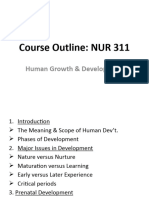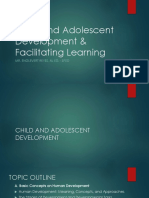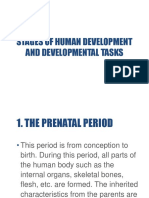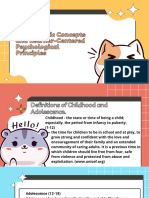0% found this document useful (0 votes)
19 views19 pagesPersonal Development Module 3
The document outlines the stages of human development, focusing on adolescence as a transitional phase between childhood and adulthood. It details key developmental stages from prenatal to old age, emphasizing the psychological and physical changes that occur at each stage. The importance of successfully navigating these stages for healthy personality development is highlighted, referencing Erikson's and Havighurst's theories.
Uploaded by
galamitonshyraCopyright
© © All Rights Reserved
We take content rights seriously. If you suspect this is your content, claim it here.
Available Formats
Download as PPTX, PDF, TXT or read online on Scribd
0% found this document useful (0 votes)
19 views19 pagesPersonal Development Module 3
The document outlines the stages of human development, focusing on adolescence as a transitional phase between childhood and adulthood. It details key developmental stages from prenatal to old age, emphasizing the psychological and physical changes that occur at each stage. The importance of successfully navigating these stages for healthy personality development is highlighted, referencing Erikson's and Havighurst's theories.
Uploaded by
galamitonshyraCopyright
© © All Rights Reserved
We take content rights seriously. If you suspect this is your content, claim it here.
Available Formats
Download as PPTX, PDF, TXT or read online on Scribd
/ 19























































































